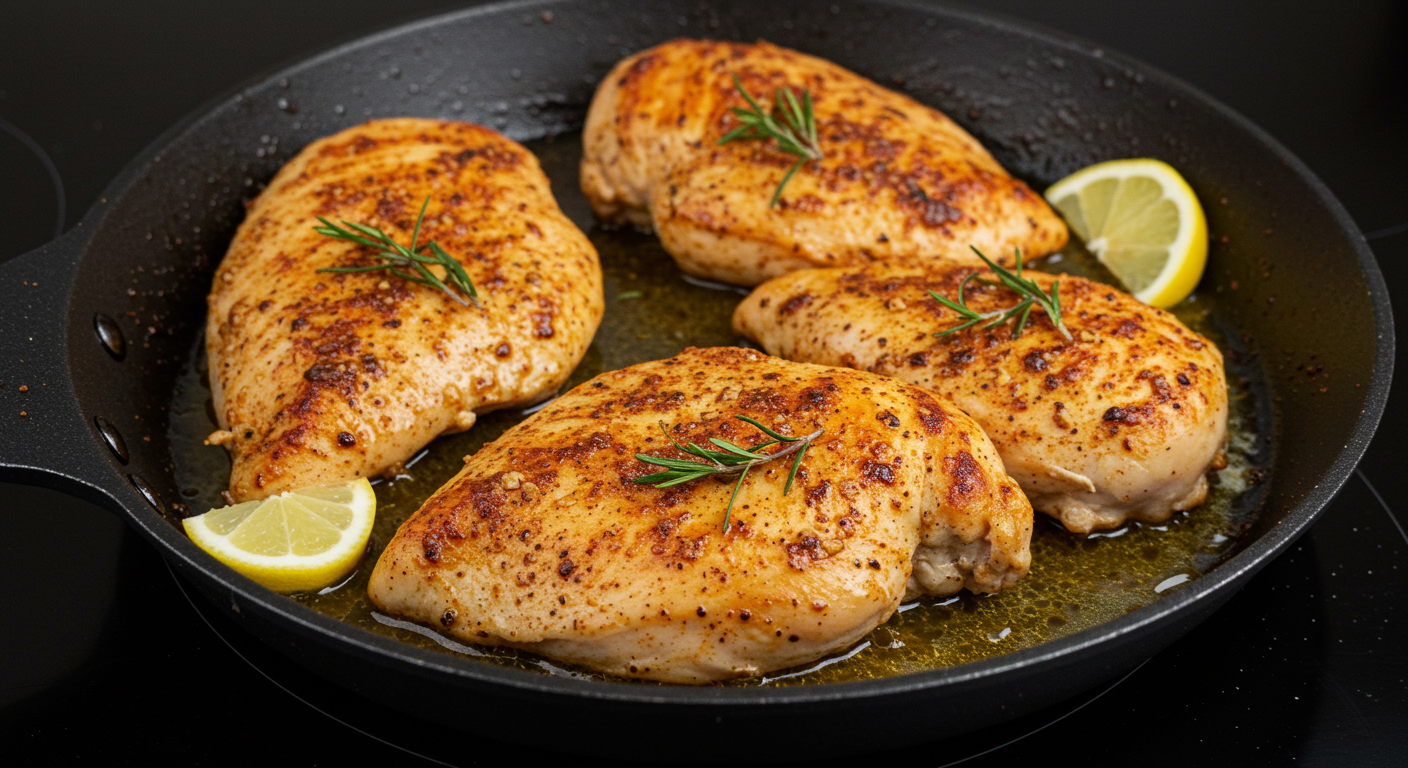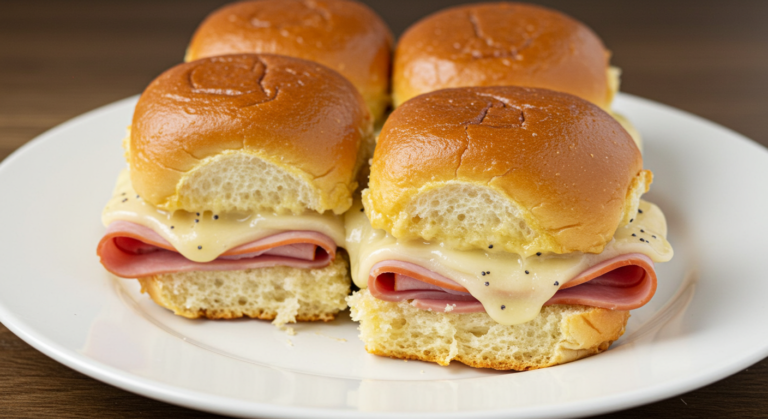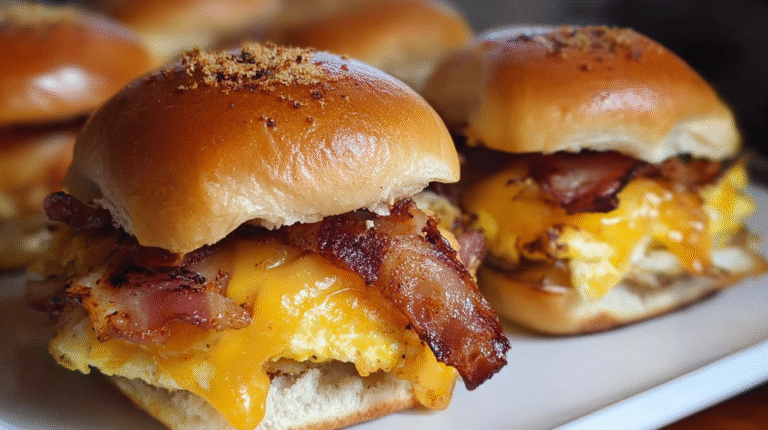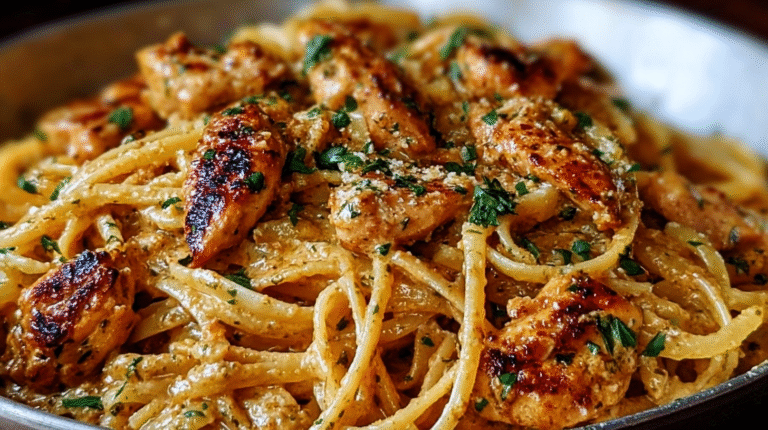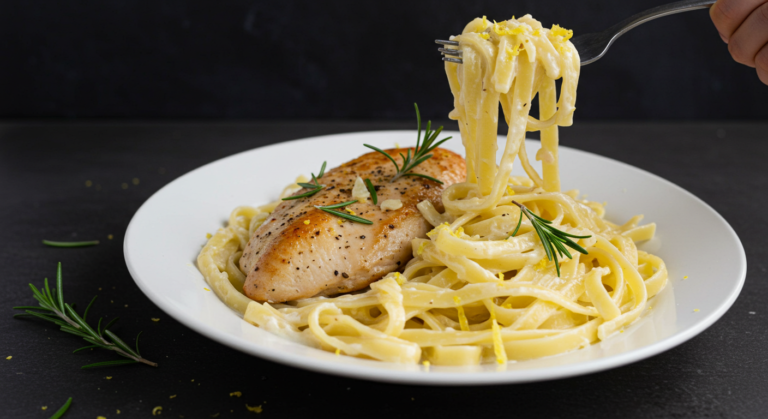How to Cook Chicken Breast Perfectly Every Time
Ever felt excited when you pull a perfectly cooked chicken breast out of the oven? Its golden brown looks and juicy inside are amazing. Chicken breast is like a blank canvas, waiting for you to make it special.
Many people worry about cooking chicken breast, fearing it might be dry or tasteless. But, with a few simple steps, you can make it juicy and tender every time. This guide will teach you how to cook chicken breast perfectly and improve your cooking skills.
Introduction to Cooking Chicken Breast
Learning the basics of cooking chicken breast is key to making it juicy and tasty. Cooking chicken 101 teaches you how to avoid common mistakes like dryness or lack of flavor. Start by cooking at 450°F (232°C) for the best results. For bigger breasts, cook for about 20 minutes for an 8-ounce (227g) piece.
Seasoning is very important for flavor. Use kosher salt, black pepper, garlic powder, onion powder, paprika, and dried oregano for a great taste. Always check if the chicken is done by making sure it reaches 165°F (74°C). Pounding the chicken to an even thickness also helps it cook evenly and stay tender.
Remember, cooking time changes with the size of the breasts:
| Breast Size | Cooking Time (minutes) |
|---|---|
| 5-6 ounces | 13-16 |
| 8 ounces | 16-19 |
| 11-12 ounces | 22-26 |
Using an Instant Pot changes cooking times a lot. Here’s a quick guide for pressure cooking:
| Weight of Chicken | Cooking Time on High Pressure (minutes) |
|---|---|
| 1 lb | 4 |
| 2 lbs | 5 |
| 3 lbs | 6 |
| 4 lbs | 8 |
| 5 lbs | 10 |
For the best results, use 1 cup of chicken broth and let it release pressure naturally for 10 minutes. Then, quickly release any remaining pressure. If you sear the chicken first, do it for 1-2 minutes on each side in the ‘Sauté’ setting.
By understanding these basics, you’ll make delicious and juicy chicken breast every time. With a few tips and methods, you’ll be confident in cooking this versatile protein.
The Importance of Choosing Quality Chicken Breast
Choosing the right chicken breast is key to a tasty dish. Quality chicken breast can greatly improve taste and texture. You can find different types, like boneless skinless chicken breast, which is easy to use and versatile.
Fresh chicken is pink, springy, and smells neutral. Frozen chicken might lose its juiciness and flavor when thawed. Always check for labels that say “organic,” “hormone-free,” or “free-range.” These labels show the chickens were raised well and can make your meal healthier and tastier.
Organic chicken is raised without harmful chemicals or hormones. Free-range chickens eat a more varied diet, which can make them taste better. Knowing these terms helps you pick the best chicken. Look for “natural” or “air-chilled” labels for better taste and texture.
Choosing high-quality chicken breast makes your meal better, whether it’s fresh or frozen. The type of chicken you pick changes your cooking and the taste of your dish.
Understanding Chicken Breast Nutrition
Chicken breast is key for those who want to eat healthy and keep a balanced diet. It’s one of the leanest cuts of poultry, packed with protein. A 3.5-ounce serving has about 23 grams of protein and only 106 calories. This makes it a top choice for fitness lovers and health buffs.
Looking at chicken breast’s nutrition, it’s impressive. For every 100 grams, it has about 32 grams of protein. This high protein content means it has all the amino acids needed for muscle repair and growth. It’s great for those who are active or trying to build muscle.
Chicken breast is also low in fat. A 3.5-ounce portion has about 2 grams of total fat, with less than half a gram of saturated fat. This makes it perfect for weight management or for anyone trying to cut down on fat without losing protein.
Chicken breast offers more than just protein and low fat. It’s a good source of pantothenic acid (vitamin B5) and vitamin B6, important for energy. It also has magnesium and potassium, and no carbs. This makes it a top choice for a healthy meal plan.
| Nutrient | Per 3.5 oz (100 g) |
|---|---|
| Calories | 106 |
| Protein | 23 g |
| Total Fat | 2 g |
| Saturated Fat | |
| Carbohydrates | 0 g |
| Pantothenic Acid (Vitamin B5) | Good Source |
| Vitamin B6 | Good Source |
| Zinc |
Eating chicken breast regularly can help with weight loss and muscle maintenance. It’s also versatile in cooking, making it easy to fit into your diet.
Essential Tools for Cooking Chicken Breast
To cook chicken breast perfectly, the right tools are key. Essential chicken cooking tools help you get the perfect doneness and keep flavors in. A good cooking thermometer and the right cookware are must-haves for a great cooking experience.
Cooking Thermometers for Perfect Temperature
A reliable cooking thermometer is vital. It ensures the chicken breast hits a safe 165°F. You can choose from:
- Instant-read thermometer: Quick and accurate temperature readings.
- Wireless thermometer: Monitors temperature remotely, allowing you to focus on other tasks.
With a cooking thermometer, you avoid overcooking. Your chicken stays tender and juicy.
Choosing the Right Cookware
Choosing the right cookware is just as important. Here are some options:
| Cookware Type | Best Uses |
|---|---|
| Enameled Cast Iron Skillet | Versatile for pan-roasting, shallow frying, and sautéing. |
| Stainless Clad Frying Pan | Ideal for achieving crispy skin through searing. |
| Non-Stick Frying Pan | Allows for easy cleanup and cooking without heavy searing. |
| Dutch Oven | Great for deep frying, though typically for larger pieces. |
| Carbon Steel Grill Frying Pan | Perfect for grilling both wings and breasts outdoors. |
| Porcelain Baking Dish | Ensures even heat distribution for beautifully baked chicken. |
| Ceramic Cookware | A non-toxic alternative to traditional non-stick options. |
Choosing the right cookware and using a cooking thermometer makes your chicken breast delicious. Quality tools make every meal better.
How to Prepare Chicken Breast for Cooking
Getting your chicken breast ready right is key for tenderness and taste. Start with brining to boost juiciness and flavor. Then, trim and slice the chicken well for better cooking and taste.
Don’t forget to use marinades and spice rubs to take your chicken’s taste to the next level.
Brining the Chicken Breast
Brining chicken can change your cooking game. Mix 1 cup of warm water, 3 tablespoons of kosher salt, and 2 tablespoons of sugar for a tasty brine. Add 3 cups of cold water to cool it down.
Soak the chicken breasts for 15 to 30 minutes for a light flavor or up to 2 hours for a richer taste. This method is vital for juicy and flavorful meat.
Trimming and Slicing Techniques
Trimming off excess fat from the chicken breasts is a must. It boosts flavor and looks better. Use a mallet or rolling pin to make the chicken breasts even.
This ensures they cook evenly and don’t dry out. For more flavor, slash the chicken’s surface. This lets marinades get in deeper.
Using Marinades and Spice Rubs
Marinades are key for adding flavor to chicken. A mix of chili powder, garlic powder, onion powder, smoked paprika, and black pepper is great. Pat the chicken dry before seasoning to help the flavors stick.
Cook the chicken in high-heat oil like avocado oil in a skillet. This locks in the flavors. Cook until it’s golden, then add liquid to keep it moist. This method, with your marinades and spice rubs, makes your chicken delicious every time.
The Best Methods to Cook Chicken Breast
Learning the right ways to cook chicken breast can make it taste great and stay juicy. Trying out different cooking methods helps you find what you like best. Baking, grilling, and skillet cooking are all great ways to make delicious chicken.
Baking the Chicken Breast
Baking chicken is perfect for keeping it moist and flavorful. Heat your oven to 400°F for the best results. Rub the chicken with olive oil and your favorite spices.
Bake for 20-25 minutes or until it’s 165°F inside. This method cooks evenly and lets you add herbs and spices for extra taste.
Grilling Chicken Breast
Grilling chicken adds a smoky flavor and a nice char. Season the chicken well and heat the grill to medium. Grill for 15-18 minutes, turning it to cook evenly.
Make sure it reaches 165°F before you serve it. The high heat and quick cooking keep the chicken moist and create a tasty crust.
Skillet Cooking Techniques
Skillet cooking is quick and effective for chicken breasts. Heat a heavy skillet over medium-high with a bit of oil. Dry the chicken to get a good sear, then cook it in the skillet.
Cook each side for 5-7 minutes, until it’s golden. Finish cooking until it’s 165°F inside. Covering the skillet helps keep the chicken juicy and tender.
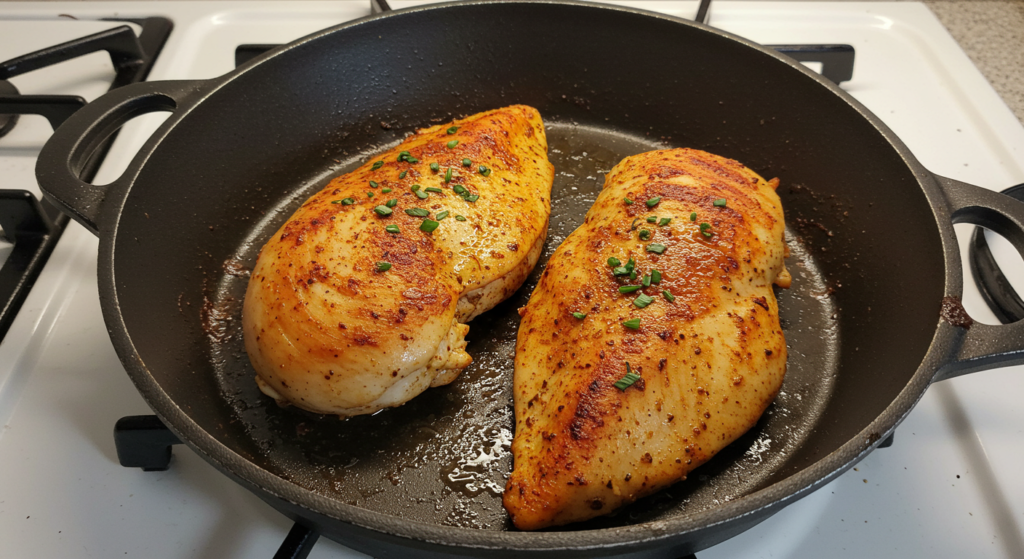
How to Season Chicken Breast
Seasoning chicken breast right can make your dish stand out. Using different herbs and spices makes meals tasty and interesting. Start with basic seasonings like salt, pepper, garlic powder, and paprika. These mix well with chicken breast.
As you get better, add more ingredients to make your chicken taste unique. This way, you can match flavors to your liking.
Using Herbs and Spices
Herbs and spices are essential for seasoning chicken. A simple mix can get better with onion powder and dried Italian seasoning. For a different taste, try mustard powder for a tangy flavor.
Use at least one tablespoon of ground mustard per pound of chicken. Choose mild mustard powder for a balanced taste.
Creating Your Own Flavor Profiles
Try new things to make your chicken taste special. Add herbs like basil or mint to balance out mustard powder. Thyme or rosemary during basting can also add depth to the flavor.
Blends like Herbs de Provence can give your chicken a unique taste. Apply these seasonings just before cooking. This keeps the chicken moist and flavorful.
Cooking Timings and Temperatures
Cooking chicken breast right means knowing the best times and temperatures. The USDA says chicken should be cooked to 165°F (74°C) for safety and taste. This way, you get moist and juicy chicken without worries.
If you cook at lower temperatures, you can adjust the time to stay safe. For example, chicken can be cooked at 145°F (62.8°C) for 9.8 minutes or at 157°F (69.4°C) for 31 seconds. Both ways, it’s safe to eat.
Recommended Cooking Temperatures
The temperature you choose affects how you cook chicken breast. Here are some common methods and their recommended baking temperatures:
| Cooking Method | Temperature | Time |
|---|---|---|
| Roasted Boneless Chicken Breast | 350°F | 25-30 minutes |
| Grilled Boneless Chicken Breast | Medium-high heat | 6-9 minutes per side |
| Roasted Bone-in Chicken Breast | 350°F | 35-40 minutes |
| Grilled Bone-in Chicken Breast | Medium-high heat | 10-15 minutes per side |
Always check the chicken’s internal temperature, at its thickest part. This area is usually the coolest. It’s key to make sure the chicken is done. Dark meat needs a bit higher temperature, about 175°F (79.4°C), because it’s tougher.
Timing Based on Thickness
Chicken cooking times vary with thickness. Thicker pieces need more time than thinner ones. Remember, the chicken’s temperature will rise a bit after it’s removed from heat.
Let your chicken rest for 5-10 minutes after cooking. This makes it juicier and more flavorful. Cooking at high temperatures helps get a crispy outside while keeping the inside tender and juicy.
Resting and Storing Cooked Chicken Breast
Proper care for your cooked chicken breast is key for flavor and safety. Resting is a must before slicing. Letting it rest for about five minutes helps juices spread evenly, keeping it moist and tender.
The Importance of Resting
Resting chicken breast is very important. Cooking causes proteins to contract, pushing juices to the center. When you let it rest, these juices settle back into the meat.
This prevents dry bites when you cut into it. A juicy chicken breast makes for a better meal.
How to Store Leftover Chicken Breast
Storing cooked chicken has several options. Refrigerate it for up to two days to keep it safe. Freezing is best for longer storage, up to three months.
Use zip-top plastic freezer bags to prevent freezer burn. Remove as much air as you can. Divide cooked chicken into smaller portions before freezing.
This makes thawing easier and allows for using smaller amounts. Label your bags with a freezer-proof marker and note the use-by date. These steps keep your chicken fresh and tasty for longer.
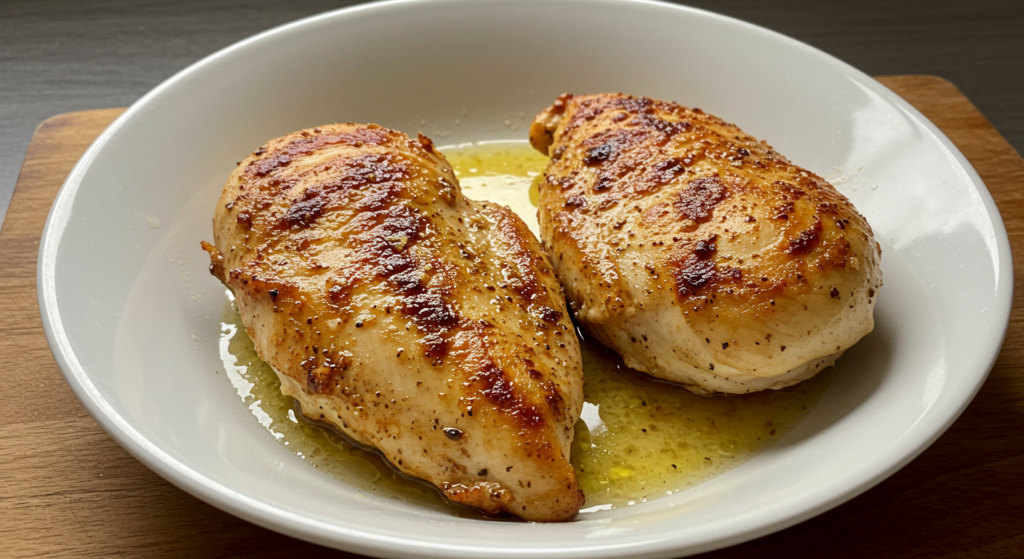
Serving Suggestions for Chicken Breast Dishes
Chicken breast is incredibly versatile. It can be served with many side dishes or used in different meals. Here are some ideas to make your meals better.
Pairing with Side Dishes
Pairing chicken breast with side dishes makes a complete meal. Here are some great options:
- Roasted asparagus or broccoli add color and crunch.
- Creamy potato casserole with cheese is comforting.
- Spicy cornbread with jalapeños adds a kick.
- Caramelized green beans with balsamic glaze are sweet.
- Mac and cheese casserole with broccoli is perfect for family.
Incorporating into Salads and Wraps
Chicken breast is great in salads and wraps. Here are some ideas:
- Add chicken breast to a classic caprese salad for a fresh twist.
- Use honey garlic sauce with veggies for a tasty wrap.
- Make a vibrant salad with mixed greens, sun-dried tomato cream sauce, and grilled chicken.
- Try a cool collard green salad with citrus and cherries for a balance.
Pairing chicken breast with the right sides or wraps makes it even better. Whether you choose classic sides or tasty wraps, your meal will be satisfying and fulfilling.
Common Mistakes When Cooking Chicken Breast
Cooking chicken breast might seem easy, but mistakes can ruin it. Knowing these errors helps avoid dry chicken and makes meals better. This part talks about common mistakes and how to fix them.
Overcooking and Its Consequences
One big mistake is overcooking chicken breast. It makes the chicken dry and tough. Use a thermometer to check if it’s at 165°F. This keeps it juicy and tasty.
Undercooking Risks
Undercooking chicken is risky. It can cause foodborne illnesses. Watch cooking times and temperatures, like when grilling or baking, to cook it safely.
Neglecting to Season Properly
Seasoning is key for tasty chicken. Skipping this makes food bland. Use marinades, spices, and herbs to boost your chicken’s flavor.
By avoiding these mistakes, you can cook chicken perfectly. Remember these tips to improve your cooking and make every dish a success!
Conclusion
Cooking chicken breast well requires a few key steps. Start with high-quality chicken, like bone-in, skin-on breasts from places like BBQ Pro Shop. This ensures your dish tastes great.
Brining, whether dry or wet, helps keep the chicken moist and flavorful. It’s a simple trick that makes a big difference. Also, pounding the chicken to an even thickness helps it cook evenly.
Marinades with yogurt or mayonnaise add flavor and make the chicken juicy. Always use a thermometer to check the chicken’s internal temperature. It should be 165°F to be safe and tender.
After cooking, let the chicken rest. This lets the juices spread out, keeping the meat moist and tasty. With these tips, you can create amazing chicken dishes that everyone will love.
FAQ
What is the best method to cook chicken breast to prevent dryness?
How can I choose high-quality chicken breast?
What are some nutritious benefits of chicken breast?
What kitchen tools do I need for cooking chicken breast?
How long should I bake chicken breast and at what temperature?
What are the best ways to season chicken breast?
Why is resting cooked chicken breast important?
How can I store leftover chicken breast?
What are common mistakes when cooking chicken breast?
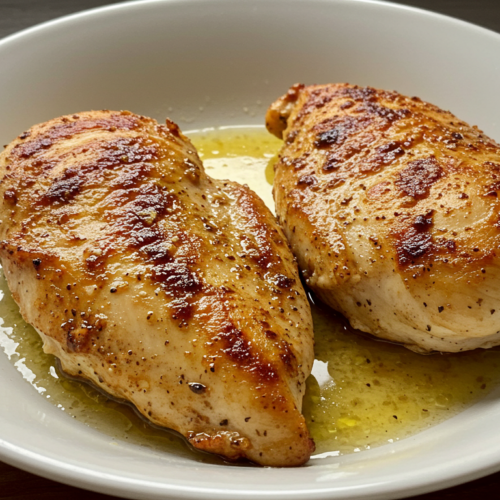
How to Cook Chicken Breast Perfectly Every Time
Ingredients
- 4 boneless skinless chicken breasts pounded to even thickness
- 1 tablespoon melted butter or olive oil
- 1 teaspoon kosher salt
- 1/2 teaspoon freshly-ground black pepper
- 1/2 teaspoon garlic powder
- 1/2 teaspoon smoked paprika
Instructions
- Brine the chicken. (Check the label of your chicken breasts. If they have already been pre-brined in a sodium solution, please skip this step.) Fill a large mixing bowl with 2 cups of lukewarm water and 1/4 cup kosher salt. Stir to combine until most of the salt is absorbed. Add 2 cups of cold water (or a few ice cubes) to lower the temperature of the water so that it is cool to the touch. Add the chicken breasts and let them sit in the mixture to brine for 15 minutes, or you can also also cover the bowl and refrigerate for up to 6 hours. Remove the chicken breasts from the brine, rinse them with cold water, then pat them dry with paper towels.
- Heat the oven. Preheat oven to 450°F.
- Season the chicken. Place the chicken breasts in a single layer in a large baking dish*. Brush on both sides (turning once) evenly with the melted butter or olive oil. In a separate small bowl, whisk the salt, pepper, garlic powder and paprika until combined. Sprinkle the seasoning mixture evenly over the chicken on both sides.
- Bake. Bake for 15-18* minutes, or until the chicken is cooked through and no longer pink. Cooking time will depend on the thickness of the chicken breasts, so I recommend using a cooking thermometer to know exactly when the chicken is fully cooked. The thickest part of the breast should measure 165°F. (If you want the chicken to be a little bit browned and crispier on top, you can turn the broiler on high for the final 3-5 minutes of the cooking time and broil the chicken until it is cooked through and golden on top. Keep a close eye on the chicken, however, so that it does not overcook and/or burn.)
- Rest the chicken. Once the chicken is cooked, remove the pan from the oven, transfer the chicken to a clean plate, and loosely tent the plate with aluminum foil. Let the chicken rest for at least 5-10 minutes.
- Serve. Serve warm and enjoy!

